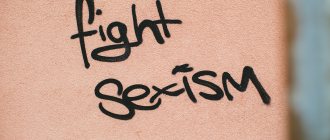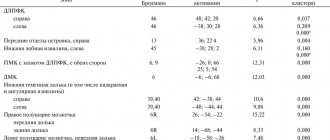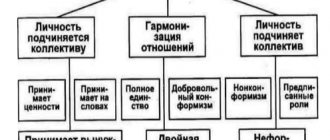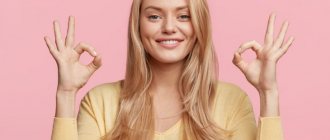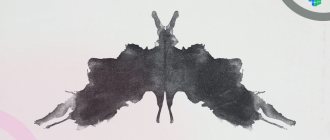Why was the Luscher test created?
The Luscher test is used to measure the psychophysiological state of a person, his resistance to stress, activity and communication skills. The author’s idea is based on the fact that the perception of color is not subjective, but universal, while color preferences, on the contrary, are subjective and are capable of diagnosing a person’s current state.
This test is very easy and quick to take, and at the same time is considered “in-depth”, created for specialists, psychiatrists, psychologists and doctors. Each color carries a certain energy charge, which causes both physiological and psychological effects in a person.
It is a projective technique and is based on the fact that the choice of color often reflects a person’s focus on a certain type of activity, on satisfying needs, and reflects his functional state.
Advantages of the technique
Each of the eight colors of the test was carefully selected according to its special psychological and physiological meaning - its structure - for this purpose, preliminary experiments were carried out over the course of five years with 4500 shades of colors. Their meaning is universal, it remains the same for different countries, does not depend on age, the same for men and women, educated and uneducated, or “civilized” and “uncivilized.” Many people are prejudiced against “psychological tests” primarily if they have to answer countless, time-consuming questions or if they are forced to sort through a lot of cards. Experience with the Luscher test shows that the number of those who do not accept it is very small. The test is attractive, it can be completed quickly, and the test takers do not feel that they are compromising their dignity by choosing colors. They might change their minds if they knew how revealing the test really is.
Test history
Created by Max Luscher in the middle of the 20th century, the test initially did not meet with approval among the scientific community, but over time his ideas gained popularity. The first version of the test was published in 1948, and a manual for it was published in 1970. Luscher also covered the basics of the color diagnostic method in his books “Personality Signals” and “The Four-Color Man.” The test was based on 4,500 color tones, which he selected independently.
Full and easy shortened versions of the Luscher test
"Clinical Luscher Color Test"
These are seven color tables, a cumbersome option that is used in cases where it is really needed. The colors of these seven tables are as follows:
- "grey";
- "8 colors";
- "4 primary colors";
- "blue";
- "green";
- "red";
- "yellow".
"Rapid" or "Abbreviated Luscher test"
A laconic and convenient test with eight rows of colors:
- gray(0);
- dark blue (1);
- blue-green (2);
- red-yellow (3);
- yellow-red (4);
- red-blue or purple (5);
- brown (6);
- black (7).
"Color selection method"
In 2010, Lyudmila Nikolaevna Sobchik proposed an adapted version of the shortened test - “Method of Color Choices” (MCV). This is how she commented on her work: “<...> the terminology and essence of interpretive maxims in the modified test have been significantly revised in accordance with the identified shortcomings of the original version of the method and taking into account the modern psychological thesaurus
».
Content
- 1 Description of the technique
- 2 Purpose of the technique
- 3 Advantages of the technique
- 4 History of creation
- 5 Adaptations and modifications
- 6 Theoretical (methodological) foundations
- 7 Methodology structure
- 8 Procedure 8.1 Instructions (for psychologist)
- 9.1 Election markings
- 11.1 Cards
Test author
Max Luscher (M. Luscher) was born on September 9, 1923 in Switzerland in the city of Besel. He studied sociology, philosophy of law and religion, clinical psychiatry, and psychotherapeutic methods. In 1949, he successfully defended his dissertation on philosophy and psychology, “Color as a tool for psychodiagnostics.” Luscher's main activities are conducting training seminars for psychologists and psychotherapists, supporting scientific research in the field of color diagnostics, as well as lecturing in Eastern and Western Europe, the USA and Australia. He was an honorary member of the International Rorschach Society in Rome, president of the Luscher Diagnostic Center in Rome and the Max Luscher Institute in Padua.
Application overview
iOS
Luscher test and personality psychology. Determining mood by color The appendix presents both short and full versions of the Luscher test.
Before starting testing, you need to enter your first and last name, read the instructions and select the type of test. The application is free. The results can be shared on social networks. Color test - psychological analysis of personality using the Luscher method
Dinis Ishmukhametov
Price: Free
Download
Price: Free
Instructions for passing the Luscher test
The testing procedure itself is very simple: the subject lays out cards with flowers in descending order of the degree of his personal, subjective liking for them. When taking the test, you should ignore any associations and generally accepted tastes, only your personal attitude.
It is believed that when testing you should use only original color cards, which, however, does not prevent you from taking it on a computer - the studies conducted did not show a significant difference in the results.
Decoding the results of the Luscher test
Each color represents a specific need:
- gray (0) - in fencing, creating a border;
- blue (1) - in satisfaction, calmness, stable positive attachment;
- green (2) - in self-affirmation, the desire to please;
- red (3) - in active actions, to achieve success;
- yellow (4) - in the future, hopes for the best, dreams;
- purple (5) - in self-identification;
- brown (6) - freedom from tension, comfort;
- black (7) - in refusal out of wayward protest, rebellion against one’s own fate.
If the primary colors are located in the first five positions, then it is believed that the human needs corresponding to these colors are to some extent satisfied, but if they are in the last three positions, then there is tension due to their dissatisfaction.
Color Meanings
Blue
The blue color symbolizes peace and peace of mind.
- If you like it. The desire for peace, harmony, understanding, sympathy. It means that a person is in harmony with himself. Experiences emotional comfort, calmness, gentleness, even dreaminess. Ready to communicate.
- If you don't like it. Anxiety. Fussiness. Lack of romantic attachments and connections. Indicates dissatisfaction with the current partner. Or it is possible that a break in close relationships has already occurred. Recently. The man is lonely and confused.
Green
The color of “soft power” and “flexibility of mind.” Courage and determination are the main characteristics of green supporters.
- If you “like it.” Self-confidence bordering on self-confidence. A person who prefers green is at the peak of his own strength and self-esteem.
- If you don't like it. State of frustration. The subject suffers from lack of attention. Self-esteem is wounded. Strength is running out.
Red
Symbolizes vitality. Fullness. Active life position. Involvement in what is happening. The desire to receive emotions.
- If “like” means strong emotional arousal. Symbolizes high spirits. Expresses an ardent desire to achieve success. Assertiveness bordering on aggression.
- If you don't like it. Characterizes a person experiencing severe stress. Overexcitement and irritation. Due to an excess of negative emotions, emptiness, powerlessness and fatigue occur.
Yellow
Yellow color expresses unrestrained expansiveness, looseness, and relaxation. Filled with joyful hopes. Variability in the case when there is no consistency and regularity.
- If you like it. Choosing yellow speaks of hope or expectation of great happiness. About the desire for new perspectives. A person who chooses yellow is filled with optimism. His heart “anticipates” changes and beats faster. Symbolizes readiness for upcoming changes.
- If you don't like it. The emotional state is constantly changing. Either a sharp rise, or the same unexpected decline. As a rule, this is associated with experienced disappointment. Despair sets in. Distrust and suspicion develops.
Violet
The color purple represents dreamy individuals. Indicates a tendency to wishful thinking. On the one hand, a life full of illusions acts as a kind of protective barrier from gray everyday life and negative emotions. On the other hand, leaving reality can mean rejection of reality due to complexes, lack of self-confidence and one’s own strengths.
- If “liked”. Characterizes the playful mood of the subject. The man is in the mood to flirt. Strive to please. Seeks support or compliments. The mood is even, but far from calm.
- If you “don’t like it.” Rejection of the purple color in the moment means a desire to hide from unnecessary attention. The man is clearly not in the mood for romantic adventures. Modest. Restrained. Feelings and behavior are under strict internal control.
Brown
The color brown symbolizes the crisis being experienced. Passivity.
- If you like it. A person who has chosen the color brown experiences emotional fatigue and seeks rest. Needs psychological stability. Feels insecure. Looking for a “safe” place.
- If you “don’t like it.” “Nerves are tense like strings.” Irritability. Denial of one's own psychological and physiological needs. Not accepting weaknesses.
Black
Black color in this context symbolizes a clot of negative emotions bordering on complete devastation. The desire for destruction and destruction.
- If you like it. Hostility. Negative. Complete rejection, refusal of pleasure. Filled with aggression. People who choose the color black are capable of “exploding” at any second. Ready to “destroy and break” everything around.
- If you don't like it. The subject reproduces external calm and confidence. But this is for show. In fact, aggression is hidden inside. She is fueled by denial and self-flagellation.
Grey
Gray color symbolizes emptiness. Neutrality. Characterizes a borderline emotional state.
- If “liked.” A person who chooses gray is in search of support. A partner you can rely on. Experiences a strong desire to “hide” from the existing reality. Looking for a refuge to find peace of mind and balance. Hides true feelings, demonstrating indifference and indifference.
- If you “don’t like it.” Refusal of the gray color symbolizes activity. The person seems to be “charged” with energy. Exudes cheerfulness and perseverance. Fully proactive. Involved in what is happening “here and now.” Has a clear goal. Sees ways to achieve it.
